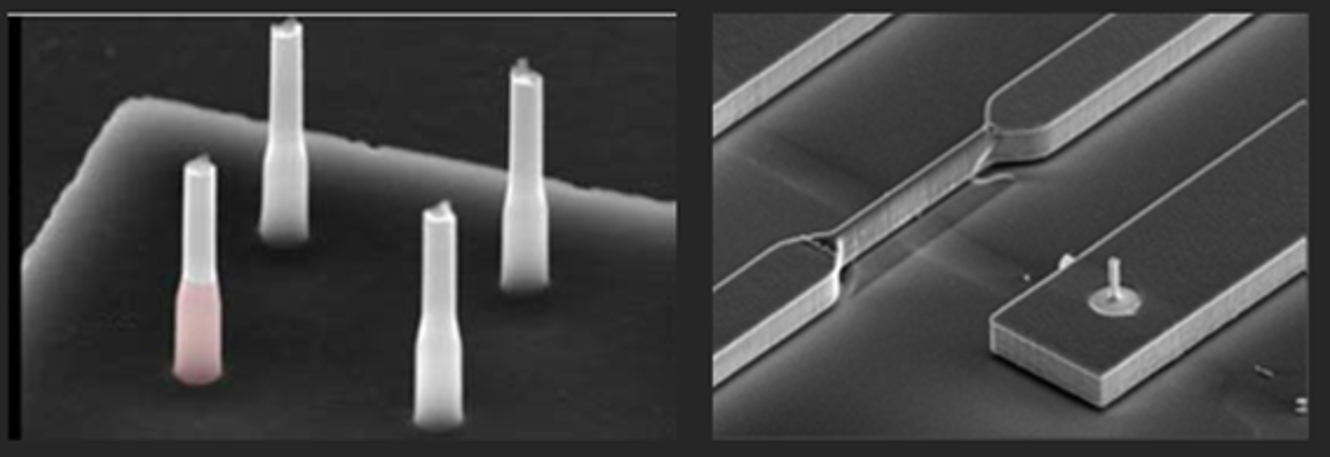New biochip for neuronal and cardiac recordings

Every living organism is the seat of electrical phenomena intimately connected with vital activities. The detection of these bioelectrical phenomena by sensors (measurement of currents and their variations over time) is a major challenge in health. The demonstration of the variation of these signals makes it possible to study a pathological versus healthy state of the organ studied, or even of the cell studied.
Currently, there are two complementary reference methods for measuring electrical activity: extracellular action potentials, using microelectrode arrays (MEAs), and intracellular electrical activities using patch-clamps. However, they do not yet provide all the expected answers.
Competitive advantages
- Improvement of signal resolution provided without any cell damage/modification, allowing long-term recordings (up to one month)
- Possible to access the intracellular information (intracellular signals)
- No deterioration of the chip nor the nanoprobes
- No effect of the recording quality after re-usability (at least three times)
- Signal stable over recording period (hours) and cell culture periods (weeks)
- Multiple information at both cellular (soma) and sub-cellular (axon/dendrites) levels
Applications
Measurement of electrical activity of cells
Intellectual property
Patent
Development stage
Technology validated in relevant environment
Laboratory

Description
A microlab embedded in a single biochip makes it possible to monitor electrical activity with high resolution & to study the chemical environment of cells, including vertical nanoprobes & nanoFET transistors
Non-invasive and multisite measurements of electrical activity down to sub cellular resolution
Simultaneous measurements of action potential by nanoprobes & chemical environment by nano-transistors
Long term recording & stimulation of electrical activity
The envisaged route to value creation is the creation of a company.

Technical specifications
- Size of chip - 1.5 x 1.5 cm²
- Design of chip - adapted to the users' needs
- Nanoprobe characteristics - H=3,5 µm/ F=200 nm
- Detection limits - tens of mV (S/N= 2000)
- Nanotransistor characteristics - Surface/Volume = 35
- Detection limits - pH: 59mV/pH



